
Prince of Persia is a cinematic platform game developed and published by Broderbund for the Apple II in 1989. It was designed and implemented by Jordan Mechner. Taking place in medieval Persia, players control an unnamed protagonist who must venture through a series of dungeons to defeat the evil Grand Vizier Jaffar and save an imprisoned princess.
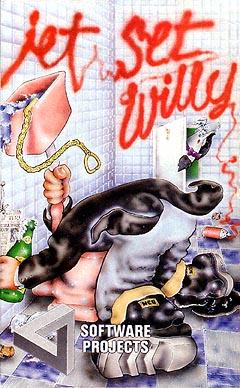
Jet Set Willy is a platform video game written by Matthew Smith for the ZX Spectrum home computer. It was published in 1984 by Software Projects and ported to most home computers of the time.
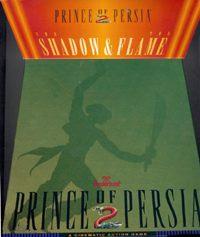
Prince of Persia 2: The Shadow and the Flame is a platform game released by Broderbund in 1993 for the MS-DOS, and later ported to Macintosh, Super NES, and FM Towns. It is the second installment in the Prince of Persia series, and a direct sequel to 1989's Prince of Persia. Both games were designed by Jordan Mechner, but unlike the original, he did not program the sequel himself. In the game, players control the Prince as he attempts to return to Persia and defeat the evil wizard Jaffar once and for all, who has assumed his appearance, seized the throne, and put his love interest, the Princess, under a death spell.

Paradroid is a Commodore 64 computer game written by Andrew Braybrook and published by Hewson Consultants in 1985. It is a shoot 'em up with puzzle elements and was critically praised at release. The objective is to clear a fleet of spaceships of hostile robots by destroying them or taking them over via a mini-game. It was later remade as Paradroid 90 for the Commodore Amiga and Atari ST home computers and as Paradroid 2000 for the Acorn Archimedes. There exist several fan-made remakes for modern PCs. In 2004 the Commodore 64 version was re-released as a built-in game on the C64 Direct-to-TV, and in 2008 for the Wii Virtual Console in Europe.

Mystic Towers is an isometric platform game developed by Animation F/X, and published in 1994 by Manaccom domestically and Apogee Software internationally. Originally exclusive to MS-DOS compatible operating systems, it was re-released on Steam in 2015 with Microsoft Windows and Mac OS support. It stars Baron Baldric, an old wizard with a magic staff and an array of amusing mannerisms, who must quest through twelve towers and rid them of monsters. Mystic Towers is a sequel to Baron Baldric: A Grave Adventure, a platform game in which Baron Baldric battled an evil sorcerer ancestor.

The Mystery of Time and Space is a popular online graphic adventure game created by Jan Albartus (LOGAN). The game was produced using Macromedia Flash and was an early influential example of the escape the room genre. There are 20 levels of varying length, some consisting of a single room and others consisting of a large network of rooms. Though advertised as a constant work-in-progress with "new levels coming soon," MOTAS has not been updated since May 2008.
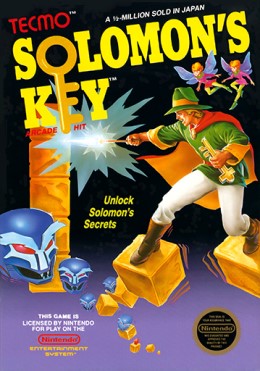
Solomon's Key is a puzzle game developed by Tecmo in 1986 for an arcade release on custom hardware based on the Z80 chipset. It was ported to multiple systems including the Nintendo Entertainment System and Commodore 64. The PC Engine version was known as Zipang and the Game Boy version as Solomon's Club. A prequel, Solomon's Key 2, was released in 1992 for the NES. The game was also ported to Virtual Console for the Nintendo 3DS and Wii U in 2006 and later to Nintendo Switch Online in 2018.

Impossible Mission is a video game originally written for the Commodore 64 by Dennis Caswell and published by Epyx in 1984. The game features a variety of gameplay mechanics from platform and adventure games, and includes digitized speech. Impossible Mission, which casts the player in the role of a secret agent infiltrating an enemy stronghold, is widely considered one of the best games for several platforms.
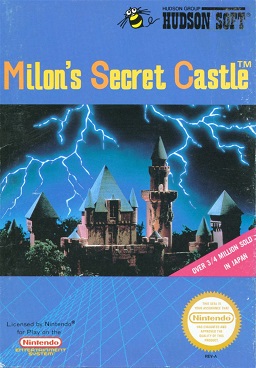
Milon's Secret Castle, known in Japan as Meikyū Kumikyoku: Milon no Daibōken, is a 1986 action-adventure game released by Hudson Soft for the NES. A Game Boy version was released in 1993. A sequel, DoReMi Fantasy, was released in 1996 for the Super Famicom.
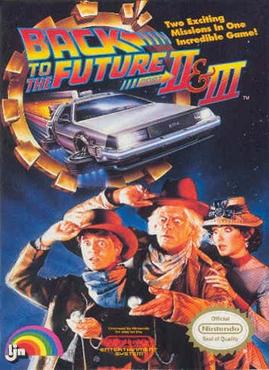
Back to the Future Part II & III is a 1990 video game for the Nintendo Entertainment System based on the second and third films in the Back to the Future trilogy. The game was produced by Beam Software and published by Acclaim Entertainment under their LJN label.
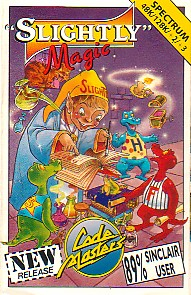
Slightly Magic is an action-adventure game published in 1991 by Codemasters for the Amiga, Amstrad CPC, Atari ST, Commodore 64 and ZX Spectrum. It was written by Colin Jones, author of Rock Star Ate My Hamster.

D/Generation is an action-adventure game with puzzle elements developed for the 8-bit Apple II during the late 1980s, but instead published and released for MS-DOS, Amiga, and Atari ST by Mindscape in 1991. The game takes place in a slightly cyberpunk futuristic setting in 2021.
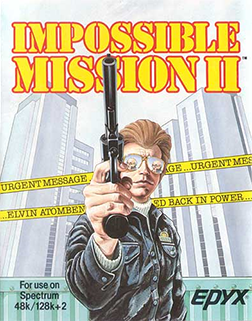
Impossible Mission II is a video game developed by Novotrade and published by Epyx in 1988. It was released for the Commodore 64, ZX Spectrum, Amstrad CPC, Enterprise 128, Nintendo Entertainment System, DOS, Atari ST, Apple II with at least 128K, Apple IIGS, and Amiga.
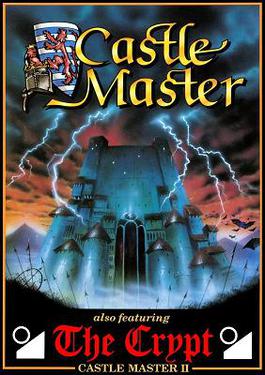
Castle Master is a 1990 video game by developer Teque Software Development and published by Incentive Software. It was released for the ZX Spectrum, Commodore 64, Amstrad CPC, Amiga, Atari ST and IBM PC. A compilation was released also in 1990 that contained the original and the sequel, Castle Master II: The Crypt.
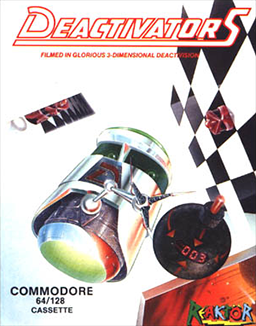
Deactivators is a 1986 puzzle video game designed by David Bishop and Chris Palmer, developed by Tigress Marketing and System Software, and published by Ariolasoft's action game imprint Reaktor. The player controls bomb disposal robots known as deactivators and must use them to deactivate bombs planted by terrorists in five research complexes. The concept for the game came from a brainstorming session between Bishop and Palmer; its design and development took five to six months to complete. It was released for the Amstrad CPC 464, Commodore 64, and ZX Spectrum platforms in October 1986.
Prince of Persia is a video game franchise created by Jordan Mechner. It is centered around a series of action-adventure games focused on various incarnations of the eponymous Prince, set in ancient and medieval Persia.

Karateka is a 1984 martial arts action game for the Apple II by Jordan Mechner. It is his first published game and was created while he was attending Yale University. The game was published in North America by Broderbund and in Europe by Ariolasoft. Along with Karate Champ and Yie-Ar Kung Fu, Karateka is one of the earliest martial arts fighting games. It was inspired by Japanese culture and by early Disney animated films and silent pictures. An influential game of its era, it was one of the first to use cinematic storytelling and sound design, and rotoscoped animation.
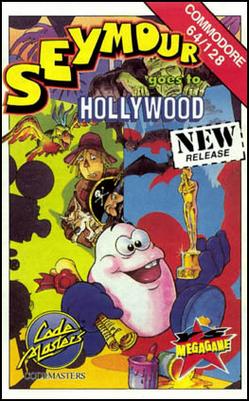
Seymour Goes to Hollywood, also known as Seymour at the Movies, is a platform and adventure game developed by Big Red Software and originally published in Europe by Codemasters in 1991. Players control Seymour, a small potato-like creature who wishes to be a film star. The film's script has been locked in a safe, meaning Seymour must solve puzzles by collecting and using objects scattered throughout the game in order to progress, ultimately retrieving the script and allowing filming to start.

Total Eclipse is a first person adventure game released for the Amiga, Atari ST, Amstrad CPC, Commodore 64, MS-DOS and ZX Spectrum computers in 1988. It can also be considered an early example of a first-person shooter.

















